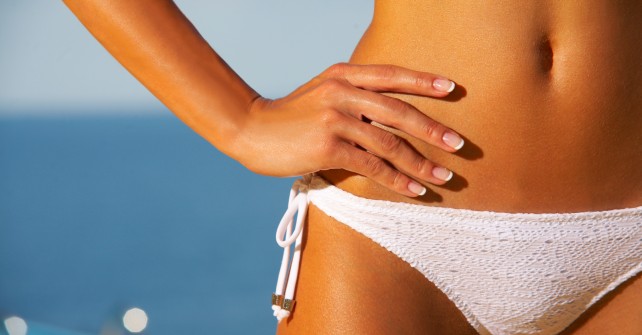Summer sun care – the essential facts

With skin cancer rates in Australia on the up and up – it is said that 2 in 3 Australians will be diagnosed by the time they are 70 – it’s now more than ever time to get up to speed with all the facts on sun care and tanning.
There is no such thing as a ‘base tan’ or safe tanning: if you are lying outside in the sun, you are burning. After 20 minutes, UV sunlight rays start to penetrate the deep layers of your skin, and the brown pigment that develops (tanning, which is a surge of melanin in the skin) is your body’s reaction to protect itself.
In Australia, we are exposed to two types of UV rays: UVA and UVB. UVB rays cause the burning the skin and will reach the skin first, however UVA are responsible for long term health and aging damage, and can penetrate glass so the likelihood of you being incidentally exposed to UVA rays (without being burnt) inside a car, or next to a window are increased.
Put simply, Sun Protection Factor (SPF) is a time indication of how long you can stay in the sun before harmful exposure to UV rays. An SPF 30 gives you 300minutes of protection, provided the full amount of sunscreen is applied. Australian standards state that one-teaspoon (6ml) should be applied to each arm, torso and leg, for a total of 35ml – roughly the size of a shot glass – to the entire body. However, research shows that Australians under apply sunscreen by almost half, so the full SPF isn’t nearly being reached.
In the last twelve months Australian laws allowed for an increase to an SPF50 level, in line with most global standards, however the increase in protection level is only slight (1.3%), so you need to ensure that you are continuing to apply the required amount.
Generally, self-tanners don’t contain an SPF due to the nature of the formulations, so choosing a sunscreen type (spray, gel, powder, lotion) that works with your method of faux tanning is important. There’s no reason why you can’t enjoy a fresh, glowing skin this summer – just make sure you lotion up first.


